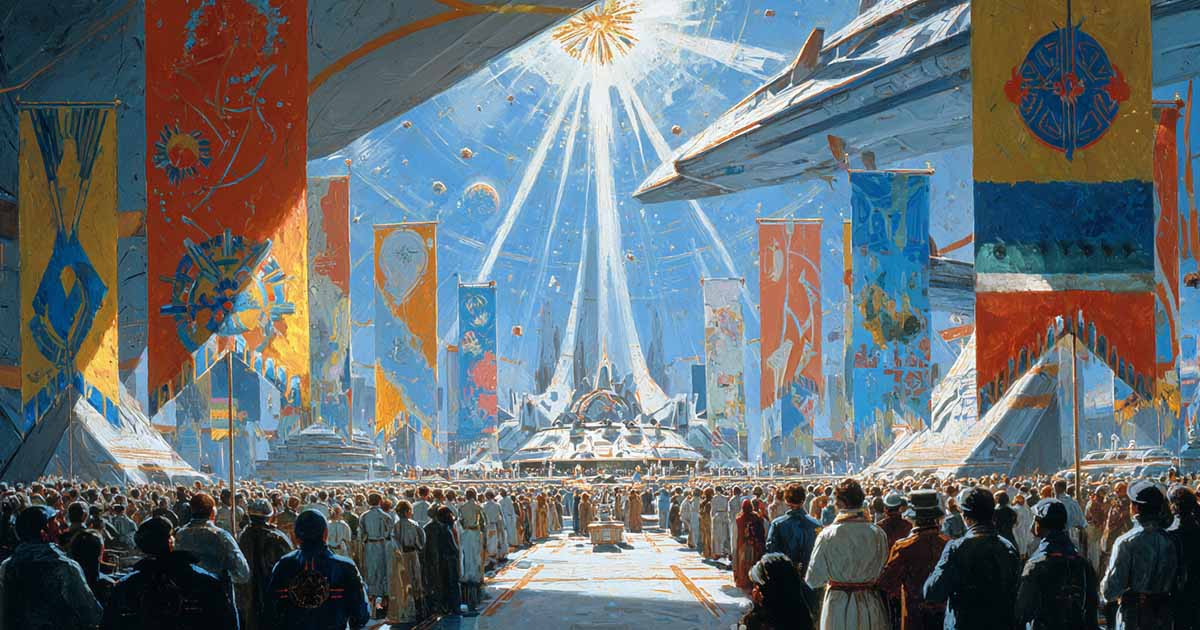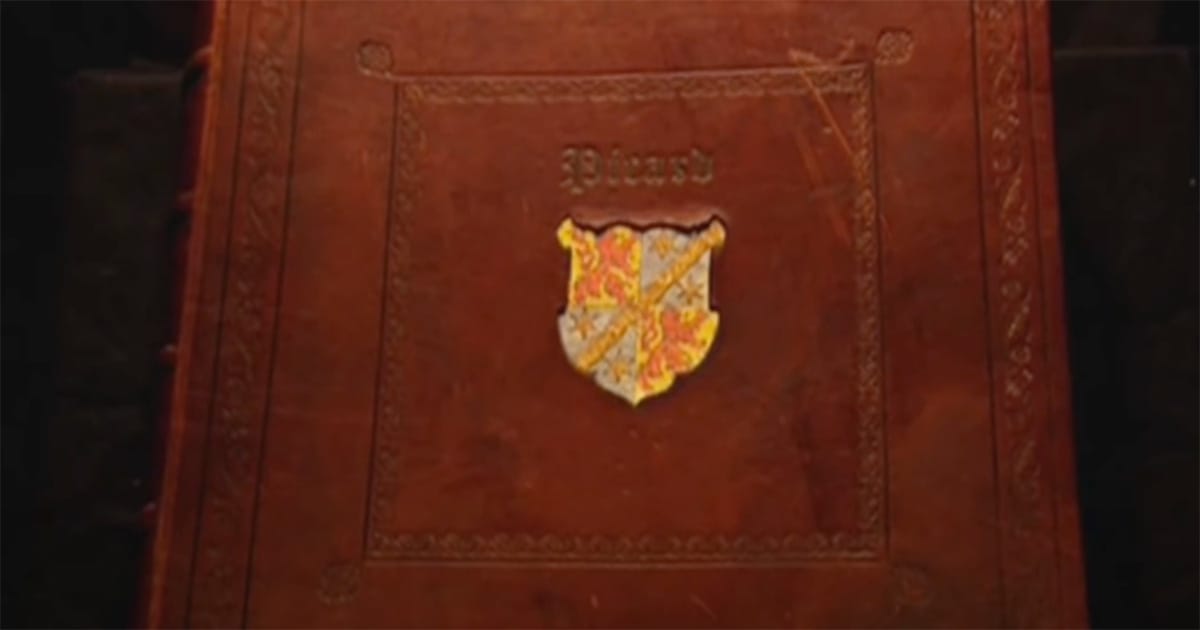The Birth of the Federation in Classic "Star Trek"
Discover the story behind Federation Day in "Star Trek," the founding of the United Federation of Planets, and why this imagined holiday continues to inspire fans with its vision of peace and unity.

This Week in Classic Science Fiction
On October 11, we tip our caps to an often overlooked footnote in "Star Trek" lore. Federation Day.
In 1994, while preparing background material for "Star Trek: Generations," franchise historian Larry Nemecek designed a newspaper clipping for Captain Picard’s family album. The headline declared "It’s Federation Day," and the date given was October 11, 2161.
That was marked as the day the United Federation of Planets was founded. The clipping never appeared on screen, yet the detail has become a point of fascination for long-time fans who enjoy finding hidden corners of Trek history.
Federation Day is often regarded as a galactic equivalent of Independence Day. It represents the hope of a united Earth joining with Vulcans, Andorians, and Tellarites to create something greater than any one world could achieve alone. Much like July 4 in the United States, the date suggests a shared story of triumph born from years of hardship and conflict.
Although October 11 is technically non-canon, the choice shows how deeply the production team cared about the richness of the "Star Trek" universe. Even a background prop could carry symbolic weight.
This week, we salute Federation Day, a reminder that science fiction often teaches unity by imagining the future as something worth celebrating.
Sponsored by: Green Lady Alien & Pet | గ్రీన్ లేడీ ఏలియన్ T-shirt

The "Green Lady Alien & Pet" T-shirt carries the flair of cosmic couture. A glimpse of fashion that feels half Paris runway and half distant world, it turns science fiction into style.
The Birth of a Galactic Federation
Unity as a Science Fiction Ideal
Science fiction has often imagined futures where divisions fade away. The United Federation of Planets in "Star Trek" is the clearest picture of this dream. The Federation showed that exploration and peace could exist side by side. It gave audiences a sense that mankind could grow into something larger than itself.
This vision emerged in the mid-twentieth century. Writers and viewers alike had lived through wars that shook the world. They yearned for a path forward that did not rely on weapons or conquest. The Federation gave those longings a face and a flag.
The idea of unity was not new to science fiction. H. G. Wells wrote of global government as a solution to endless conflict. Isaac Asimov imagined a Galactic Empire and later a Foundation that would bind worlds together across the ages. These authors laid the groundwork for "Star Trek" to cultivate on television.
The Founding of the Federation
The Federation is said to have been founded in 2161. The charter brought together Earth, Vulcans, Andorians, and Tellarites. In doing so, it created a political structure strong enough to survive the perils of deep space. This gave writers a canvas on which to paint stories of diplomacy as well as exploration.
The specific date of October 11 entered the lore in a roundabout way. A background newspaper clipping prepared for "Star Trek Generations" declared that it was Federation Day. Though this detail never appeared on screen, it resonated with fans who loved finding hidden treasures in the sets and props. Small touches like this carried significant weight.
By tying the founding to an exact day, the Federation began to feel more like a real institution. Nations in our world celebrate their birth with flags and fireworks. The Federation, through this invented holiday, gained a similar sense of depth. It was a fictional mirror of how human societies preserve memory.
Echoes of History
The Federation’s founding was a reflection of real-world struggles. The United Nations was created after the Second World War to prevent another global catastrophe. The Cold War threatened peace in every corner of the globe. Against that backdrop, the idea of interplanetary unity was a bold kind of hope.
Viewers in the 1960s were sensitive to the fragility of peace. The Cuban Missile Crisis was a recent memory, and nuclear weapons were still expanding in number. To those viewers, the Federation was not just a backdrop for adventure. It was an emblem of survival.
The symbolic choice of October 11 carried a kind of echo as well. October was the month when Sputnik launched, sending humanity into space for the first time. By setting Federation Day in that same season, the lore seemed to tie the past to the imagined future. Whether deliberate or not, it carried a poetic symmetry.
The Federation in Contrast
Not all science fiction futures were built on cooperation. Some authors warned of empires that crushed individuality. Asimov’s Galactic Empire often showed the dangers of too much central authority. It raised questions about what is gained and lost when order is imposed on many worlds.
The Federation stood as a counterpoint to these darker visions. It was not about conquest but consent. Its power came from mutual choice rather than fear. For many viewers, that difference was what made it inspirational.
Still, the Federation was never portrayed as perfect. Later series showed its flaws and its political struggles. Yet those stories only reinforced the strength of the original vision. Even in conflict, the dream of peace remained the guiding star.

Why Federation Day Matters
At first glance, Federation Day might seem like a minor detail. It was tucked away in a prop that never made it to the screen. Yet details like these are what made "Star Trek" a living world rather than a thin stage. They gave texture and authenticity to the future.
Science fiction often works best when it mirrors the structures of real life. Holidays, anniversaries, and ceremonies help societies define who they are. By giving the Federation its own holiday, the creators implied how its people thought about their own history. The imagined tradition made the fictional world feel solid.
Fans embraced this detail because it encouraged deeper engagement. It showed that even the smallest pieces of the universe were crafted with care. For those who wanted to believe in the Federation, a holiday gave them one more reason to feel connected.
The Ongoing Legacy
The dream of a Federation has not faded. Later shows, such as "Star Trek: The Next Generation" and "Star Trek: Deep Space Nine," explored the challenges of maintaining such a vast alliance. At times, they questioned whether the dream could survive. At other times, they showed how it could grow stronger under pressure.
This continuing exploration gave depth to the original idea. A founding date may have been only a small prop, but it became a springboard for larger questions. How do societies hold together? How do they stay true to their founding principles? These questions are as relevant today as they were in the 1960s.
Science fiction often reminds us that the future will be shaped by choices. The Federation represents a choice for peace, trust, and unity. It may be fictional, yet it has inspired countless viewers to hope for a better future. That is why the idea of Federation Day continues to matter.
"Star Trek" Federation Day Trivia
- The first mention of the year 2161 as the founding of the Federation appeared in the 1988 "Star Trek: Chronology" reference work, years before the "Star Trek Enterprise" finale showed the event on screen.
- Early "Star Trek" scripts did not reference the Federation at all. The idea was gradually developed during the first season as the writers sought a political framework for Kirk’s voyages.
- In "Star Trek: Enterprise," the United Federation of Planets is formally signed into being at Starfleet Headquarters in San Francisco, giving Earth the honor of hosting the union.

